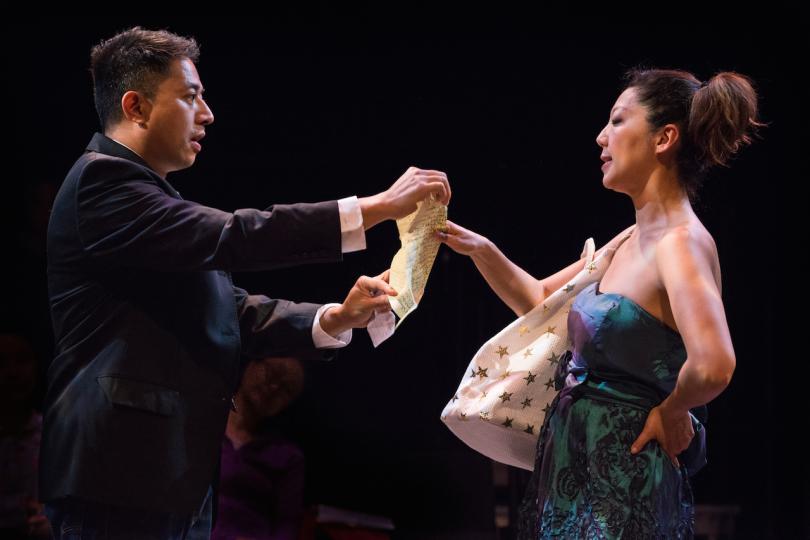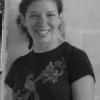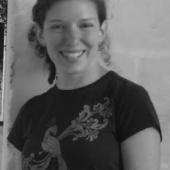Magical theater magic in a simple package

Over the summer, Kevin Obsatz and Alan Berks wrote an ongoing dialogue about theater vs. film. You should read it – especially the part where Kevin talks about how much more powerful the magic of film can be. In the article, Kevin argues that film can harness a lot more immersive technology than theater, with the crucial caveat that “more powerful” doesn’t necessarily mean “better.”
I don’t take issue with Kevin’s case for the power of film. But while movie magic might be more powerful, I’m pretty sure that theatrical magic can be cooler. I enter into evidence Mu Performing Arts’s production of The Two Kids That Blow Shit Up.
Two Kids is not trying to outdo anyone on, well, most levels. It’s a coming-of-age romantic comedy that’s 90 minutes long and has two characters. Carla Ching’s script is smartly constructed, building three-dimensional characters and strong relationships without any weighty exposition, but the dialogue isn’t going to blow your mind. In other words, the play itself is fine, with the added important bonus that these well-developed characters are also Asian-American. (If you think that isn’t important, I challenge you to name any other romantic comedy that meets these criteria.)
Making theater magic
But director Randy Reyes and his cast, Sun Mee Chomet (Diana) and Sherwin Resurreccion (Max), have done some pretty amazing things with an otherwise just-fine rom com. This is where the theater magic comes in.
With its frequent changes of both time and place, Two Kids creates a unique challenge for both the set designer and the actors. (14 scenes over 90 minutes clocks in at a scene change about every 6 minutes.) My first reaction to the play’s structure: why isn’t this a movie? It would work so much more smoothly on film! Did Ching initially imagine this as a film but ran out of money?
But almost just as quickly, I realized why Two Kids isn’t a movie – and, in fact, how much would have gotten lost if it had been on the big screen.
A lot of it has to do with Sarah Brandner’s set. She has filled the stage with boxes of different shapes and sizes, some stacked on top of each other in improbable and seemingly precarious ways. It is oddly beautiful the way all the pieces fit together, and even more beautiful and exciting is what happens during each scene change, when the boxes get opened up to reveal more and more artifacts from the characters’ pasts.
Yes: this is a pretty obvious metaphor for Diana and Max’s emotional baggage. (And just in case you didn’t catch that, Randy Reyes spells out all the metaphors for you in his Director’s Note.) But it also plays with ideas about memory – the ways our memories accumulate on top of one another, the moments we conveniently un-box a memory or store it away again, and the ways we decide which memories to treasure and which to discard. And the set displays the characters’ ages in each scene, which not only makes the play easier to follow but also reminds us of the build-up of moments that have led the characters to where they are today.
Master actors
The scene transitions might be tiresome for some audience members, but for me, they were essential. Chomet and Resurreccion would be excellent actors no matter what they were wearing, but the quick changes of costume and physicality – which all happen on stage – highlight all the skill that goes into their rapid transformations from adulthood to childhood, adolescence, and back again. I don’t know how, but Resurreccion seems to be able to make his face look more careworn at the drop of a hat, and Chomet is masterful at capturing how different a moment of self-doubt will look for a character in her teens and in her thirties. On top of that, they imbue Max and Diana’s friendship with real chemistry that evolves and changes over time.
Each character hits roadblocks and develops coping strategies, occasionally together and more often at their own separate pace. We rarely see the moments where their lives come together or fall apart; more often, we witness the buildup to a big moment or the aftermath of a crisis. This sense of absence is deepened by the importance of Diana’s and Max’s relationships to their parents, who never appear on stage. In the process of boxing and unboxing props, of showing us how the actors move between the present and different moments in the past, Reyes’s production emphasizes how much of our memories and experiences rest on a series of gaps, transitions, and messes.
Say what you want about film: how smooth the scene changes are, or how effectively we can be made to believe that an actor is fifteen or fifty. Sure, that can be powerful. But on film, The Two Kids That Blow Shit Up would’ve just been a pleasant rom com.
In the theater, it has a whole lot more to say.




